Nareit tracks quarterly investment holdings for the largest actively managed real estate investment funds focusing on REIT investment for insights into expert investor sentiment. In the first quarter of 2025, active managers continued to shift allocations to telecommunications, health care, and office.
Telecommunications was the most overweight sector relative to its index weight, invested at 132% of its index share and the second highest allocation overall after residential. Health care had the largest year-over-year increase among the sectors for the second quarter in a row and had the third highest allocation in the funds.
Steady gains in office put the sector at 72% of its index share, a significant increase from just 48% of its index share in the first quarter of 2024. Self-storage has also rebounded back up to nearly its index weight in the funds, with a quarterly gain of almost a percentage point.
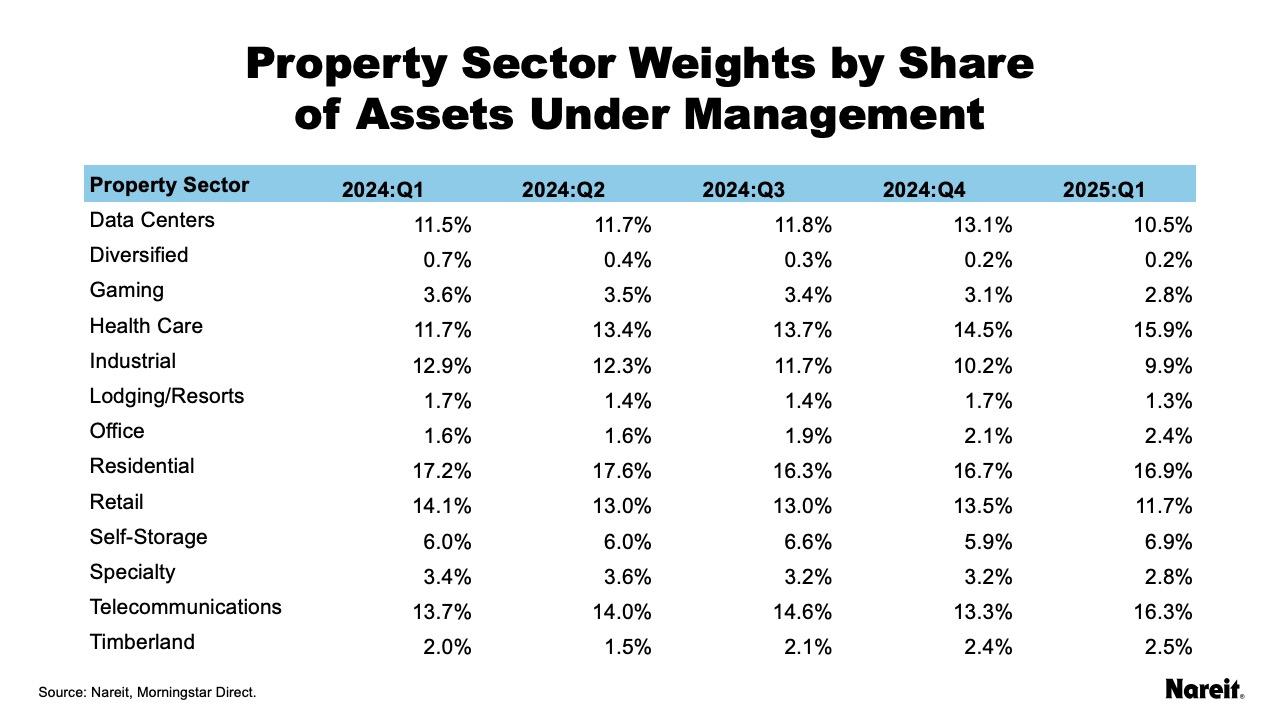
The table above shows the share of each equity REIT property sector by assets under management.
- Residential remains the property sector with the highest investment, at 16.9%.
- Telecommunications edged out health care for the second highest allocation, at 16.3%, with health care at 15.9%. Health care had the second highest allocation at the end of 2024.
- Retail held fourth place at 11.7%, followed by data centers at 10.5%, and industrial at 9.9%.
- Diversified remained in last place, at a 0.2% share.
- Office and lodging/resorts remained near the bottom of the distribution, but office had over a 2% share for the second quarter in a row, with lodging/resorts remaining below 2%.
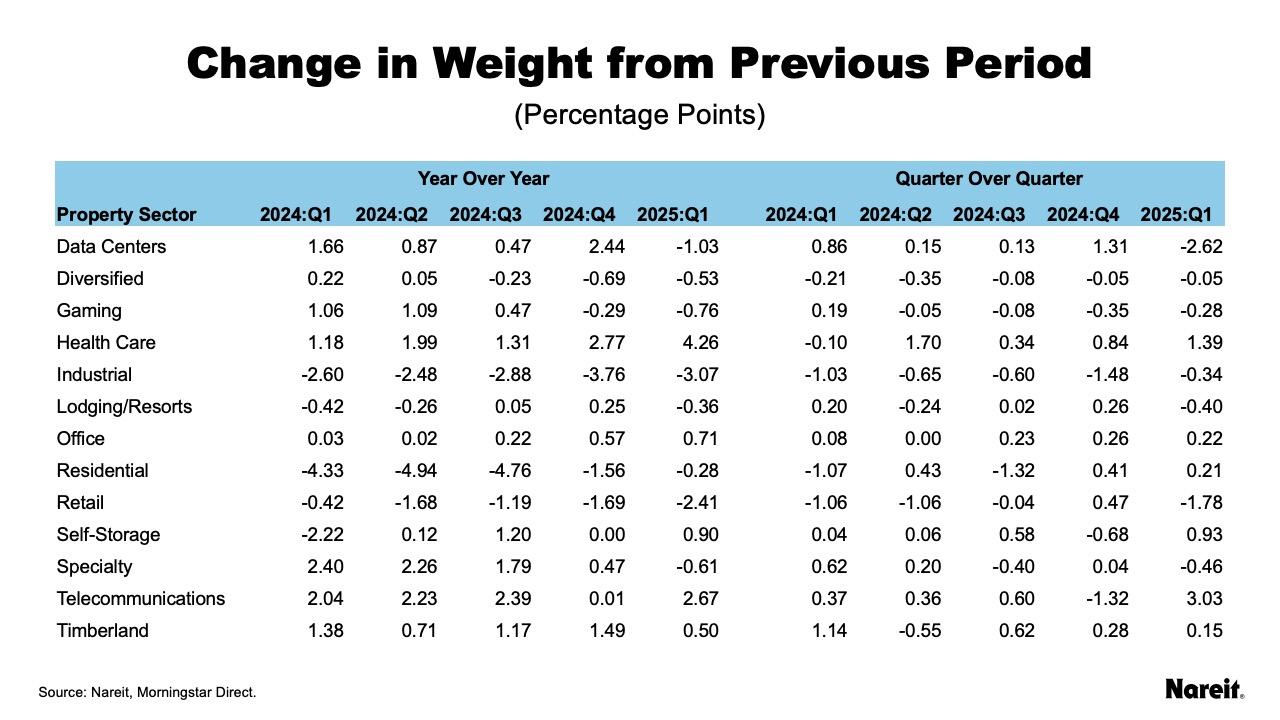

The table and chart above show the change in property sector asset share by quarter and from the previous year.
- For the second quarter in a row, health care had the highest annual increase. Health care also had the second highest quarterly increase for the first quarter of 2025. Health care was up 4.3 percentage points year-over-year in the first quarter of 2025, and up 1.4 percentage points from the previous quarter.
- Telecommunications had the highest quarterly increase, propelling it to the second highest allocation in the first quarter of 2025. Telecommunications was up 3 percentage points for the quarter and 2.7 percentage points for the year.
- Self-storage, office, and timberland increased both quarterly and annual allocations by less than one percentage point.
- A year of steady quarterly gains in the office sector resulted in a significant increase in annual gain, up 0.6 percentage points in the fourth quarter.
- Self-storage had the third highest quarterly and annual gain of almost a percentage point for each. After a decline at the end of 2024, self-storage rebounded to almost a 7% share in the funds, the highest of the past five quarters.
- After steady quarterly increases in data centers over the last year, the sector declined 2.6 percentage points.
- Lodging/resorts also saw a turnaround, up 0.3 percentage points for the quarter and year.
- Reductions in industrial holdings continued in the fourth quarter, leaving the sector with the largest annual and quarterly decline, down 3.1 percentage points for the year and 0.3 percentage points for the quarter.
- Retail has also declined throughout 2024, with only a small quarterly gain in the third quarter, and was down 1.8 percentage points in the first quarter of 2025. This gave retail the second largest annual decline of 2.4 percentage points.
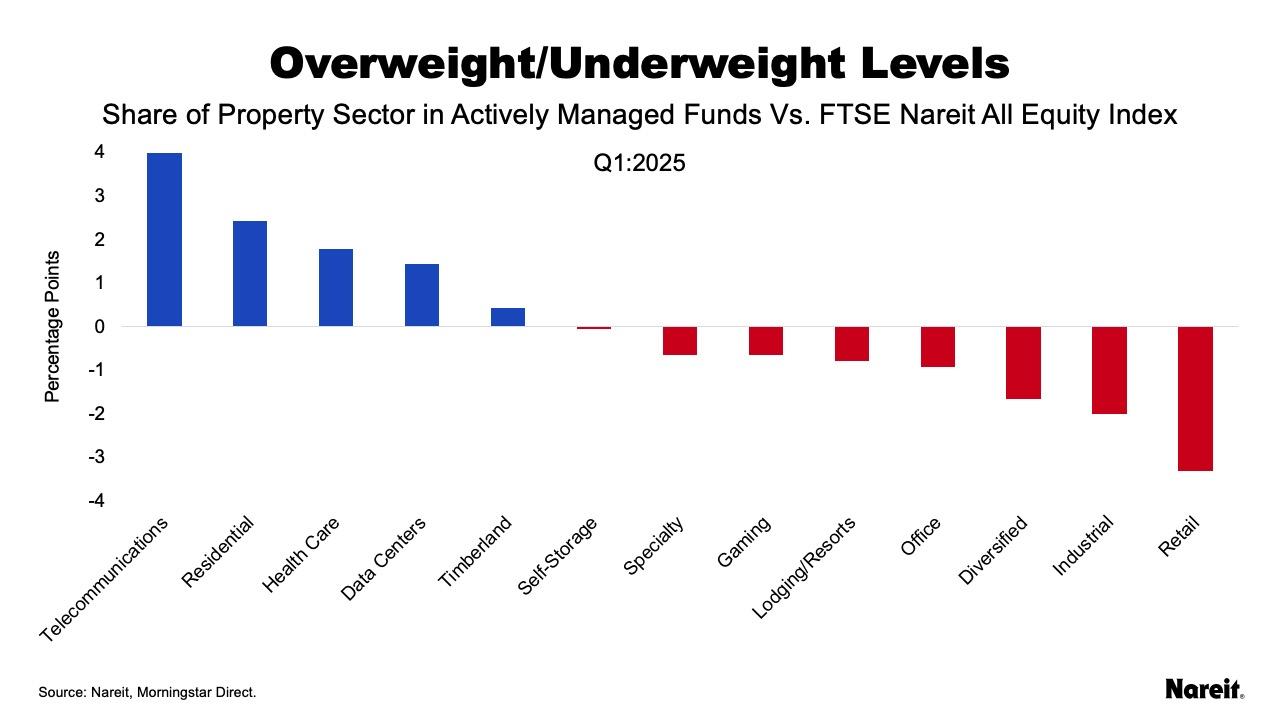
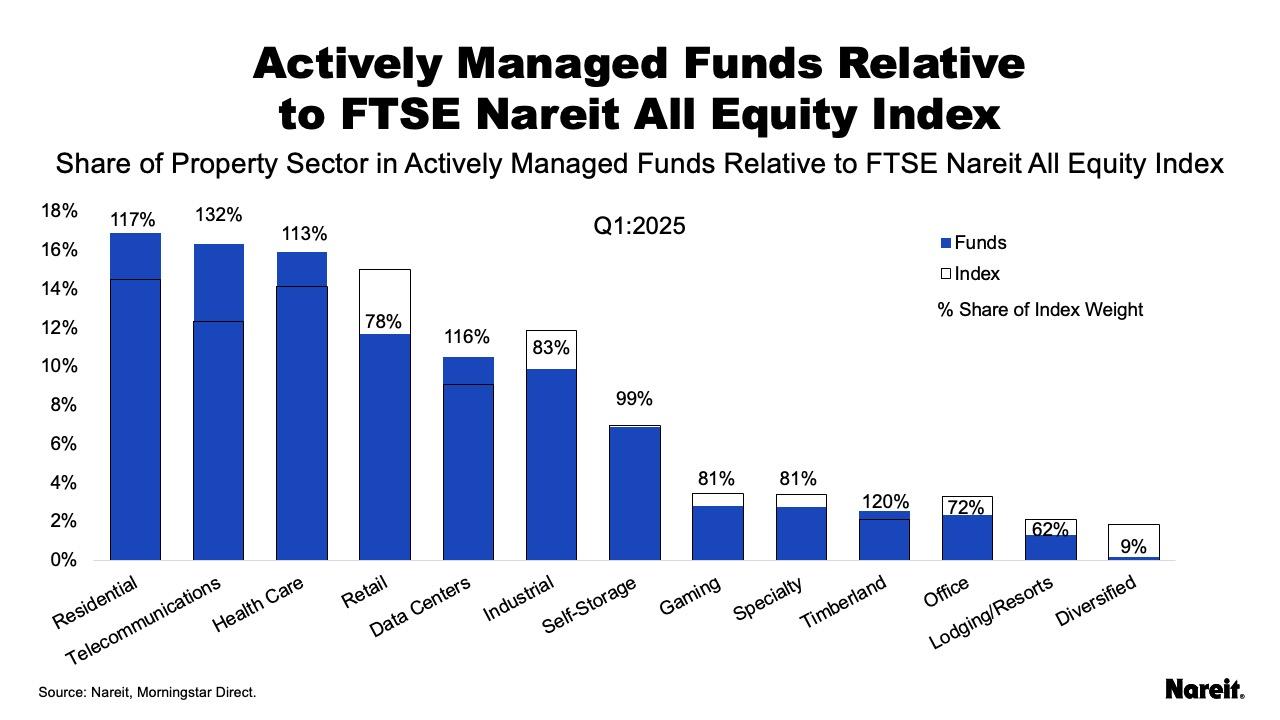
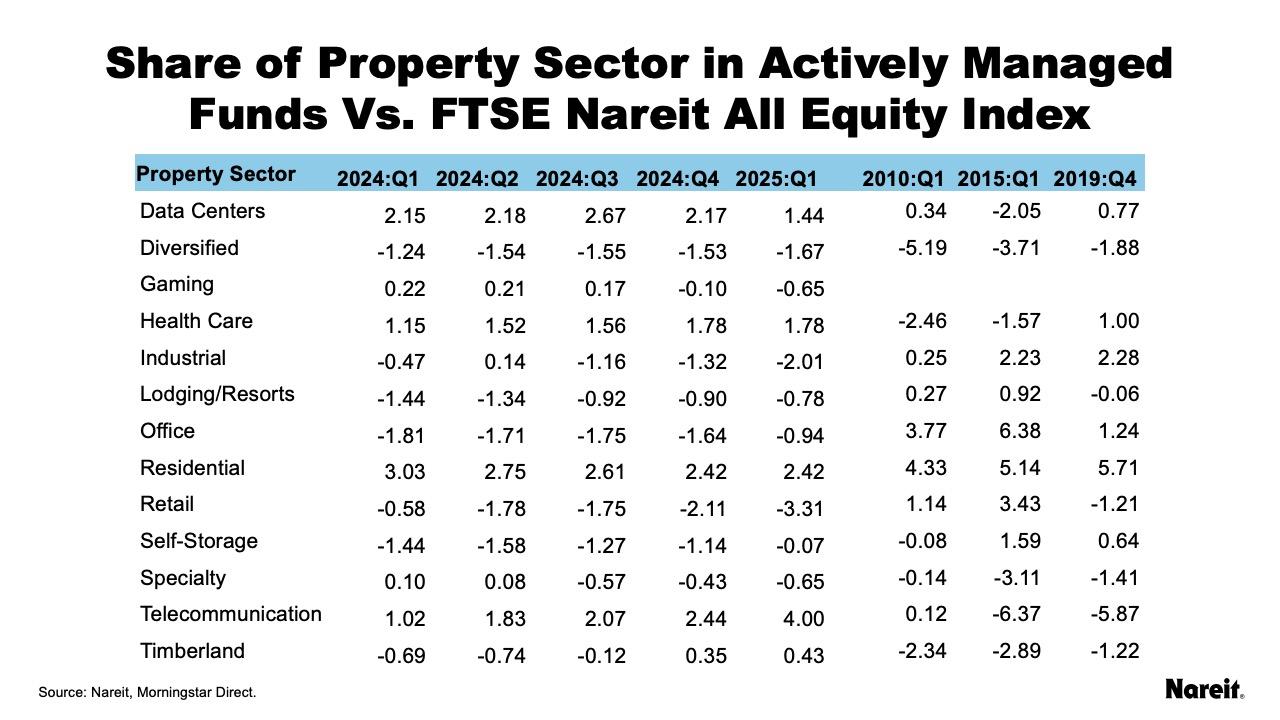
The charts and table above compare the weight of the sectors in actively managed funds to the weight of the sectors in the All Equity index.
- Telecommunications remained the property sector with the highest overweight relative to its index share, at 132% in the first quarter of 2025. Telecommunications was also the highest overweight in absolute terms, at 4 percentage points overweight its index share.
- Data centers had been the second highest overweight at the end of 2024 and dropped to fourth highest at 116%.
- Edging out data centers in the first quarter were timberland, at 120% of its index share, and residential, at 117%. Residential remains overweight its index share, at 2.4 percentage points, but down from the beginning of 2024 when it was overweight by 3 percentage points.
- Retail became more underweight through 2024 and into 2025. Retail was only slightly underweight by less than a percentage point in the first quarter of 2024 and had grown to 3.3 percentage points underweight by the first quarter of 2025.
- Office saw a steady gain in shares relative to index weight through 2024 and is less than 1 percentage point underweight at the beginning of 2025 compared to 1.8 percentage points underweight at the beginning of 2024. In relative terms, office started at 48% of its index share in 2024 and is up to 72% of its index share.
- Self-storage gained ground in 2024 and is roughly at par with the index in the first quarter of 2025, after several quarters of underweighting by over a percentage point.
Note that two of the 23 funds had not reported first quarter data for this analysis.
For more information on the active manager project, see Reading the Real Estate Market: Tracking Active Managers’ Allocations Over Time.